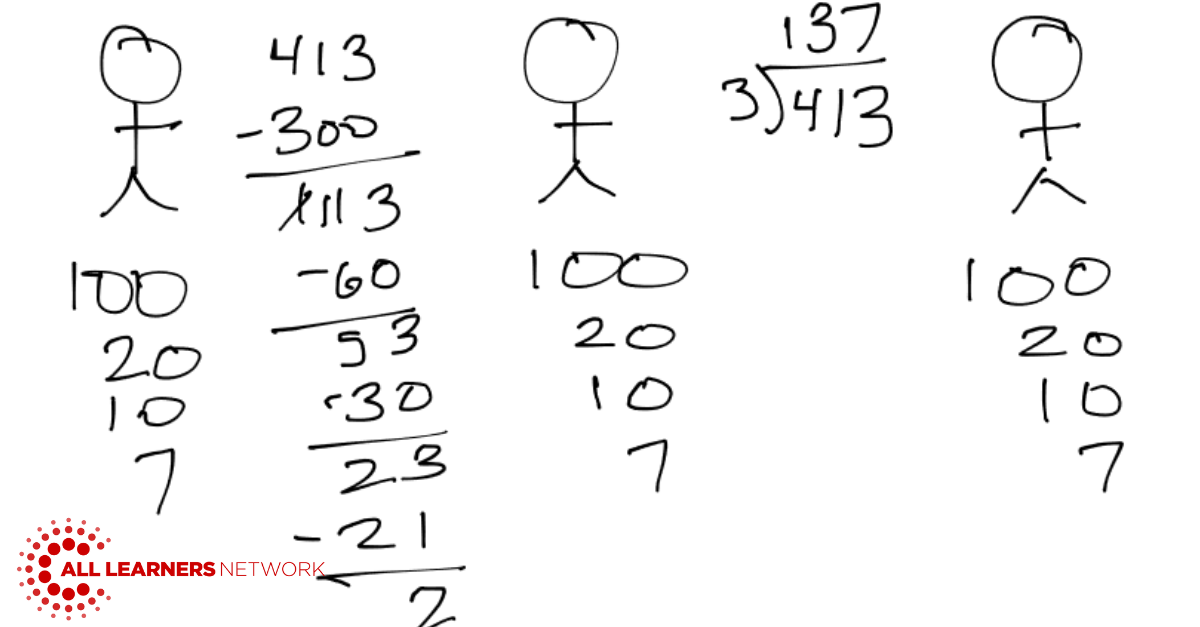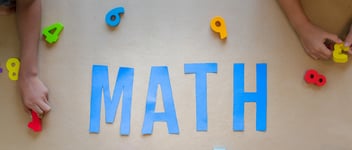
What do special educators need?
What do new Special Education teachers need most? More support for teaching math!
A common refrain during professional development work with new special educators is the struggle that they encounter because they haven’t been adequately prepared to teach math. Does this experience sound familiar to you?
Shayna had just been hired out of her grad program in special education to support middle school learners. She was excited to start her new job and was thrilled to be working with young adolescents. When she received her caseload, she realized that six of her students would require her support in math. While Shayna had passed math in school it had been a long time since she had done any real work with math.
In her preparation to be a special educator she had taken a single course in teaching math, and she hadn’t left feeling very confident. The thought of working with learners who were having difficulty with fractions, proportions and algebra was daunting. How was she going to support these students?
In my work with special educators, I’ve observed that there is an urgent and compelling need to provide greater professional learning for them in teaching mathematics. Teachers who work with the most vulnerable students should, in theory, have the most effective teaching tools at their disposal. Instead, many learning specialists have to rely on what they’ve been able to piece together for themselves. As a result, learners do not get the support they need.
In most school districts there is seldom a systemic and persistent effort to improve the math teaching of special educators. Providing effective, supportive professional learning in math content and pedagogy is one of the most important priorities in K-12 education.
Special education teachers, especially at the beginning of their careers, are not prepared to teach math effectively (Sheppard & Wieman, 2020). Most graduate programs in the U.S. do not do an adequate job of preparing pre-service teachers to teach math (NCTQ, 2022), both in terms of math content or pedagogy. Few graduate programs (less than 2%) provide coursework specific to math content for children with disabilities. Less than half require math pedagogy aimed at learners on IEPs.
What are Special educators missing?
Special educators often have gaps in their knowledge of the math content they teach. Opportunities to learn this knowledge - and knowledge of the mathematical strategies students might use are, “diminutive” (Hunt, Martin, Patterson et al., 2021). While sped education learners often require access to a wide variety of mathematical strategies, their teachers are unlikely to have had any exposure to these strategies (Hunt, Martin, Patterson et al., 2021). Further, many special educators themselves have, or have had, difficulty with math content, even in areas of computation.
Along with gaps in math content, special educators are also unlikely to have been exposed to the use of conceptual models (visual representations) for teaching and understanding mathematics (van Scheuermann, Poch & Murray, 2018). Since many learners, but most especially students with learning challenges, rely on the flexible use of conceptual models, the absence of this ability from the pedagogy of special educators is an important shortcoming.
When special educators are unable to support their students in the conceptual development of important math concepts, they tend to resort to teaching students to memorize mathematical procedures or algorithms. This approach can have a temporary benefit, in that it might allow a student to pass a test of recall of the procedures. But it shortchanges students in the long run as few will understand an important concept as a result of memorizing steps in a procedure.
I recently observed a special educator working with a group of sixth grade students on long division. Looking at the approach she used, and a contrasting approach based on a conceptual model, provide a useful perspective on how the gaps in special education teacher math preparation disadvantage students.
During an “intervention block”, a special education teacher pulled six students out of class to work on long division. These students were all on IEPs and assigned to her for math support. They had all demonstrated difficulty with computing a three-digit dividend divided by a one-digit divisor. They were gathered to listen to her explain how to perform this operation. Her intervention was to teach students a pneumonic to remember the steps in the division algorithm: “Does McDonalds Sell Cheeseburgers Raw”. The students were told to write this on their papers and then, next to these words, the steps in the algorithm that corresponded to them: Divide, Multiply, Subtract, Compare, Remainder. Then the class went about watching the teacher solve the equation 413 ÷ 3 using this “helpful trick”.
I watched students struggle mightily with this. They did not understand how the algorithm worked, or why the steps in it worked. And they now had TWO procedures to memorize, the original and the pneumonic. None of the students demonstrated understanding of this procedure or, more importantly, the division that was being used.
The next day I had a chance to work with the same six students. We tackled the same problem 413 ÷ 3. This time, though, I asked them what the equation meant. After a bit of probing (listening to them, rather than telling them) they came to an agreement that the equation meant “413 things shared among three people”. I asked each of them to draw the three people. Five of them drew some version of stick figures . One drew three boxes. I then asked them to share the money.
Student Sample 1: Sharing with stick figures
Student Sample 2: Sharing with boxes
One of the students, as he set out to “share”, put tally marks under each person. I stopped him and told him that his approach would take forever. I made it mandatory that he would have to share groups. One of his classmates said, “Just start with 100.” He looked confused at first, then nodded and produced the sample above. In about five minutes, each of the students had produced a satisfactory answer and could explain how they came to it. Their answers agreed and this gave them confidence in the accuracy of their work.
The special educator who had worked with them on the previous day did not have access to the math understanding that connects the notion of “sharing” to the concept of division. She also had never used a conceptual model to support her students’ understanding. Both of these deficits are the result of the inadequate preparation most special educators receive for teaching mathematics.
All Learners Network provides professional learning - workshops and courses - for special educators to learn content and specialized pedagogy to support their students.
All Learners Online (ALO) provides special educators with a six hour asynchronous course on the essentials of teaching math for students with learning disabilities, as well as numerous resources to support conceptual learning.
References
Hunt, J.H., Martin, K., Patterson, B. et al. (2021). Special educators’ knowledge of student mathematical thinking. Journal Math Teacher Education. https://doi.org/10.1007/s10857-021-09508-1
NCTQ. (2022). Elementary Mathematics. Washington, D.C.: National Council on Teacher Quality. https://www.nctq.org/review/standard/Elementary-Mathematics
Sheppard, M. E., & Wieman, R. (September 01, 2020). What do teachers need? Math and special education teacher educators: perceptions of essential teacher knowledge and experience. The Journal of Mathematical Behavior, 59, 100798.
van, G. D., Scheuermann, A., Poch, A., & Murray, M. M. (February 01, 2018). Visual Representation in Mathematics: Special Education Teachers Knowledge and Emphasis for Instruction. Teacher Education and Special Education: the Journal of the Teacher Education Division of the Council for Exceptional Children, 41, 1, 7-23.





